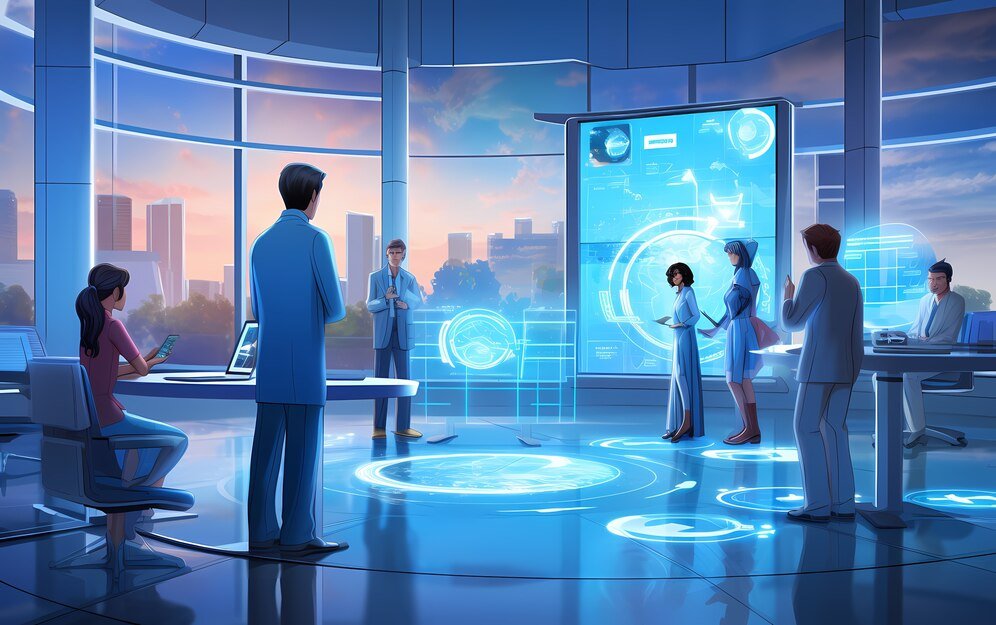Tech
Future Innovations in The World of Customer Service Technology
Customer Service Technology

The world of customer service is no longer a static scene. It’s a dynamic stage show constantly adapting to the ever-changing needs of the audience – the customer. Fueled by technology, businesses are wielding new tools to craft exceptional experiences. From VR’s immersive world to blockchain’s secure transparency, these innovations promise to rewrite the script of customer interaction.
Imagine a stale play on repeat. The jokes fall flat, the set design gathers dust. That’s the risk of outdated customer service. The field is a whirlwind of constant change, each innovation a chance to deepen engagement, streamline operations, and tighten security. Staying ahead isn’t a suggestion; it’s a necessity for a competitive edge and superior service.
Think of a visionary director seeking groundbreaking plays and captivating performances. They understand clinging to the old leaves audiences – the customers – disengaged. VR, for example, breaks the fourth wall, transporting customers into the heart of the action, fostering deeper connections and informed decisions.
Emerging Technologies and Their Potential
The customer service software landscape is morphing, fueled by innovative and new technologies. Take virtual reality (VR). Imagine a real estate agent whisking you on a virtual tour, exploring layouts, or test-driving a kitchen – all from your living room. VR shatters physical barriers, letting you interact with products in an immersive way, boosting satisfaction, and speeding up decisions.
Another rising star is blockchain. Imagine customer service interactions documented on a secure, tamper-proof record. This fosters trust as you can easily access your history with the company. No more frustrating repeats! Blockchain lays bare the customer journey, empowering you and streamlining troubleshooting. Plus, its security features shield your information from fraud and breaches.
Integrating these technologies presents both opportunities and challenges. It’s not just about plugging in a VR headset. Businesses need seamless integration to avoid disrupting the customer experience. Think of introducing a new character in a play. They need to learn lines quickly and integrate smoothly to avoid a disjointed performance. Similarly, integrating new technologies requires careful planning to complement existing processes.
Training staff is crucial too. Customer service representatives need thorough training to utilize these technologies effectively. This goes beyond basic functionality; it involves understanding how VR and blockchain can enhance the customer journey at every touchpoint. By investing in proper training, businesses can ensure their staff leverages the full potential of emerging technologies to deliver exceptional customer service.
Potential Customer Service Challenges with Future Technologies
VR headsets and blockchain promise a dazzling future for customer service, but hurdles remain. Cost is a big one. Cutting-edge solutions can strain budgets, especially for startups competing with tech giants. Careful planning is key to navigating the cost landscape.
Customer adoption is another hurdle. Not everyone embraces new tech. The key is balance – innovation shouldn’t become a barrier. Think of a museum exhibit – exciting yet accessible. Clear instructions and alternative service channels are crucial.
Finally, regulations become a challenge as technology evolves rapidly. Data-driven solutions like blockchain raise complex data protection issues. Businesses need to navigate a global maze of laws to stay compliant. Legal expertise is essential.
Wrapping It All Up
Despite these challenges, the future is bright for businesses that explore new technologies thoughtfully. It’s not about chasing every fad, but aligning advancements with broader goals and customer service objectives.
Continuous learning and adaptation are key. Businesses need to stay informed about trends, like a seasoned explorer with the latest maps. Investing in training empowers staff to master these tools. Imagine a customer service rep, after proper training, effortlessly navigating VR to guide a customer through a virtual product tour while simultaneously accessing past purchase history on a secure blockchain record to personalize product recommendations.
Staying vigilant about potential challenges is crucial. By anticipating hurdles and proactively addressing them, businesses can ensure a smooth integration of new technologies. This forward-thinking approach unlocks the true potential of customer service technology.
Table of Contents
-

 Business5 months ago
Business5 months agoSepatuindonesia.com | Best Online Store in Indonesia
-

 Technology3 weeks ago
Technology3 weeks agoTop High Paying Affiliate Programs
-

 Tech5 months ago
Tech5 months agoAutomating Your Window Treatments: The Advantages of Auto Blinds
-

 Tech5 months ago
Tech5 months agoUnleash Your Potential: How Mecha Headsets Improve Productivity and Focus
-

 Instagram2 years ago
Instagram2 years agoFree Instagram Follower Without Login
-

 Reviews11 months ago
Reviews11 months agoAndroid Laptop vs. Chromebook: Which one is better?
-

 Instagram2 years ago
Instagram2 years agoIGTOK – Get Instagram Followers, Likes & Comments
-

 Business8 months ago
Business8 months agoFollow These 5 Tips To Avail Personal Loans At Lower Interest Rates




















